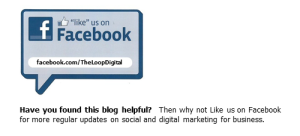Feeling a bit wobbly about your next webinar? Then might we suggest the following...
Interact
From the get-go, say a big warm hello to your audience. A conversational speaker is much easier on the ear than a brisk (or worse still, slow) presentation. If you're nervous, imagine you're just having a chat with your best friend. Make sure to ask plenty of questions regarding your audience's experience. For example, “Has this happened to you?” or “What sort of problems have you experienced in this area?” The audience also appreciate the value of being able to ask questions to an expert live on air. So allow plenty of time at the tail of your presentation to cram in as many questions as possible.
Don't go it alone
Of course, it's just about possible to run a webinar on your own, but it really helps to have a wing-man or woman to keep an eye on comments and queries coming through mid-event. Two or more speaking voices also adds texture and interest to the listening experience. Not many of us can sound riveting for 30 minutes straight, so interaction between a moderator and speaker can help keep things pacey, even with newbie speakers.
Ditch the bullets
It's important to remember that slides are 'speaker support' not autocue. Keep your speech in the notes area of your PowerPoint slides and limit the text that appears on screen to the absolute minimum. For example, I recommend my clients not to go below 32 point font size. Instead, use the most visual images you can find to illustrate your point. And don't be afraid to use quirky or amusing photos. Humour is your friend if you want to make a more impactful point. Beautiful images also grab attention, so if the budget allows buy the best images you can from an online photostore such as istockphoto.com, or have your designer get involved to make your presentation more polished.
Practice
Practice, practice, practice! Practice your speech and your timing so you don't end up running over. Try answering potential questions in advance so you feel more prepared for queries on the day. Check out your technical setup and invite guests to run through the procedure well in advance so everyone knows what to expect once the event starts.
Plan for Disaster
Maybe that sounds a bit melodramatic, but try to run through all the things that might go wrong on the day, and put some 'Plan B's' in place. For example, always have spare headphones, spare computer and even backup speakers or moderators just in case someone important is unavoidably detained on the day.
Once you implement all of the above, you're going to feel a lot more prepared, and slightly less frazzled if the proverbial excrement hits the fan.
And if you're looking for more one-to-one help on your next Business-to-Business webinar, why not get in touch with The Loop and we'll be happy to have a chat about supporting your next, or first, online event.

